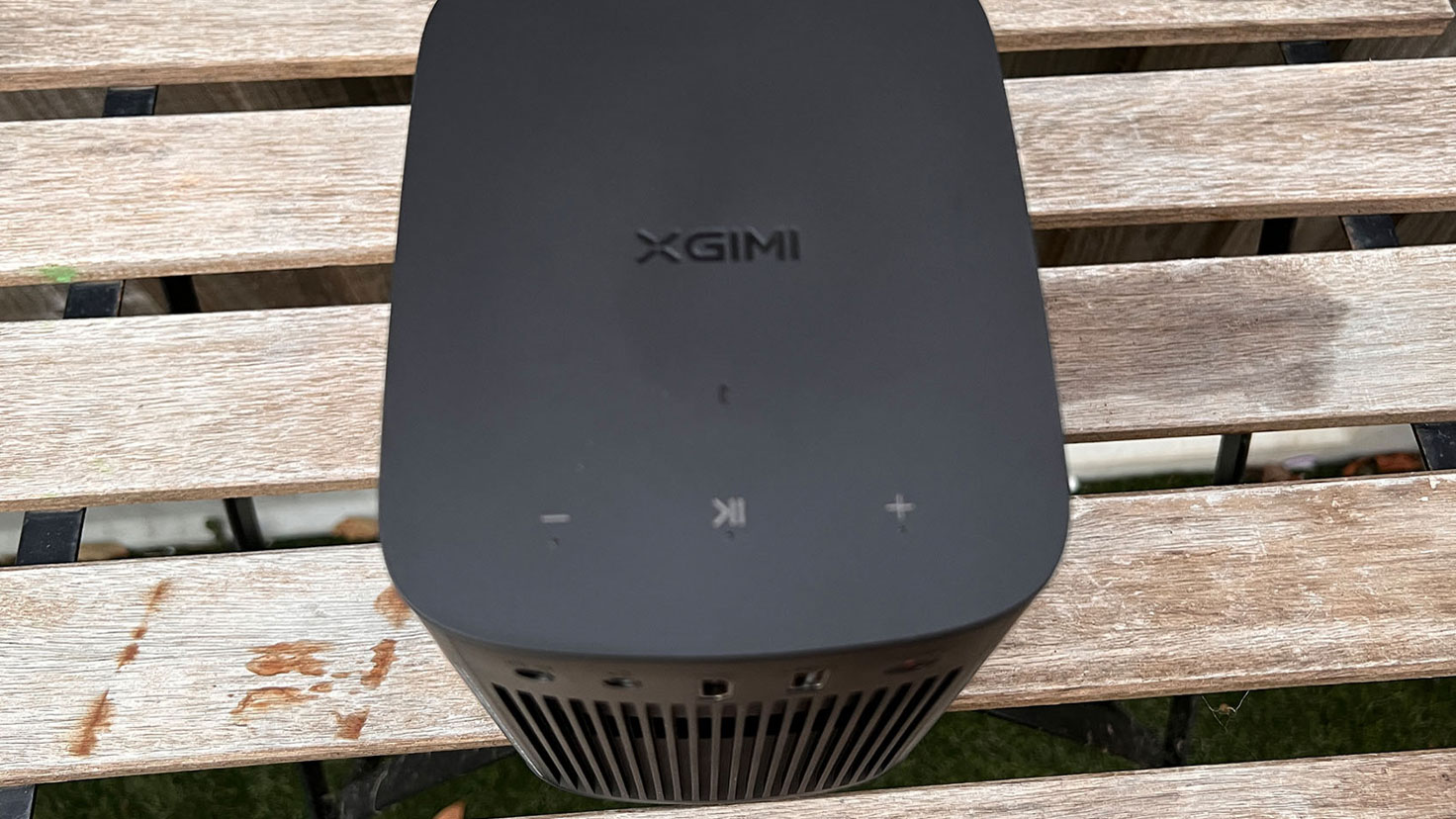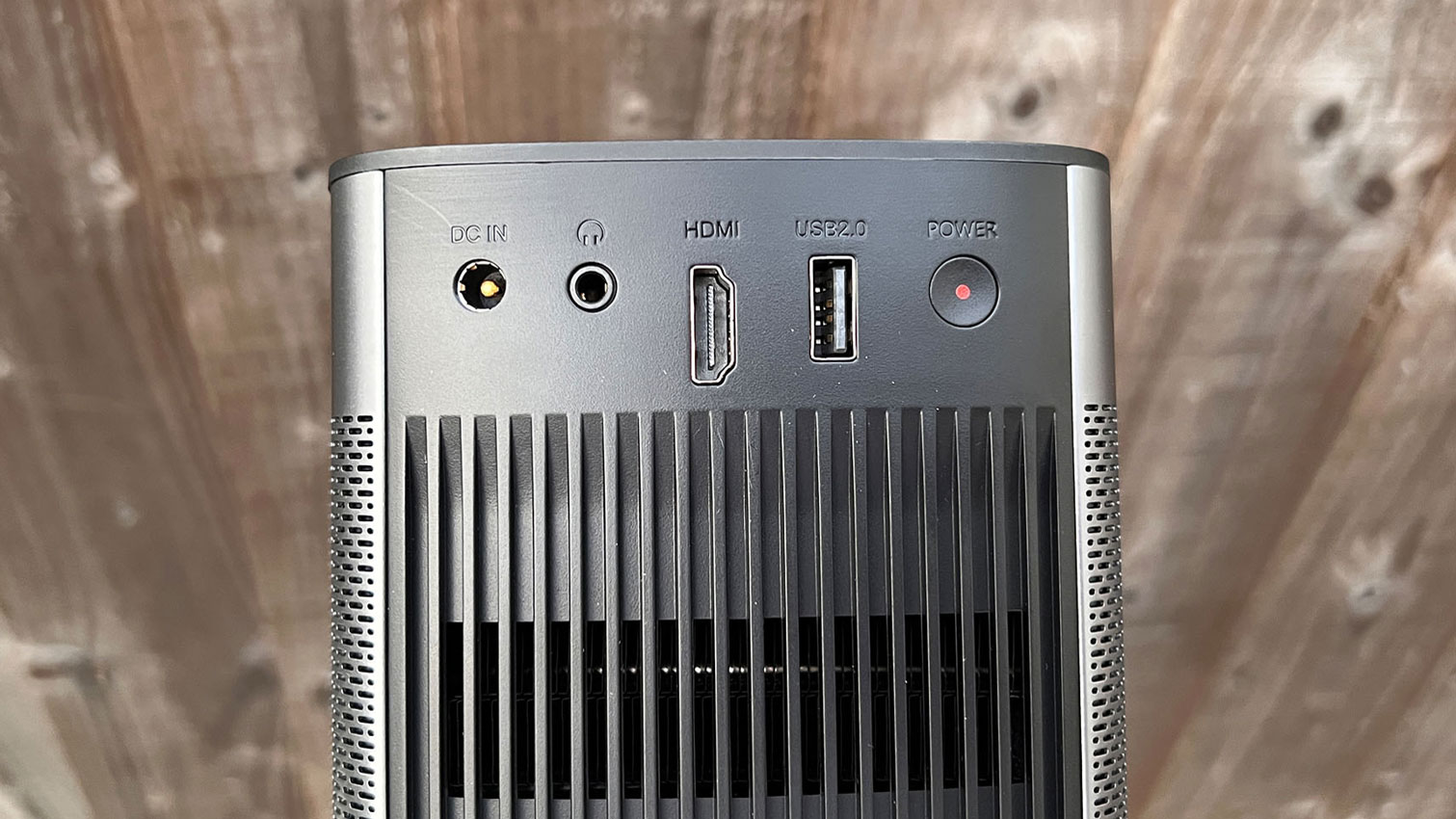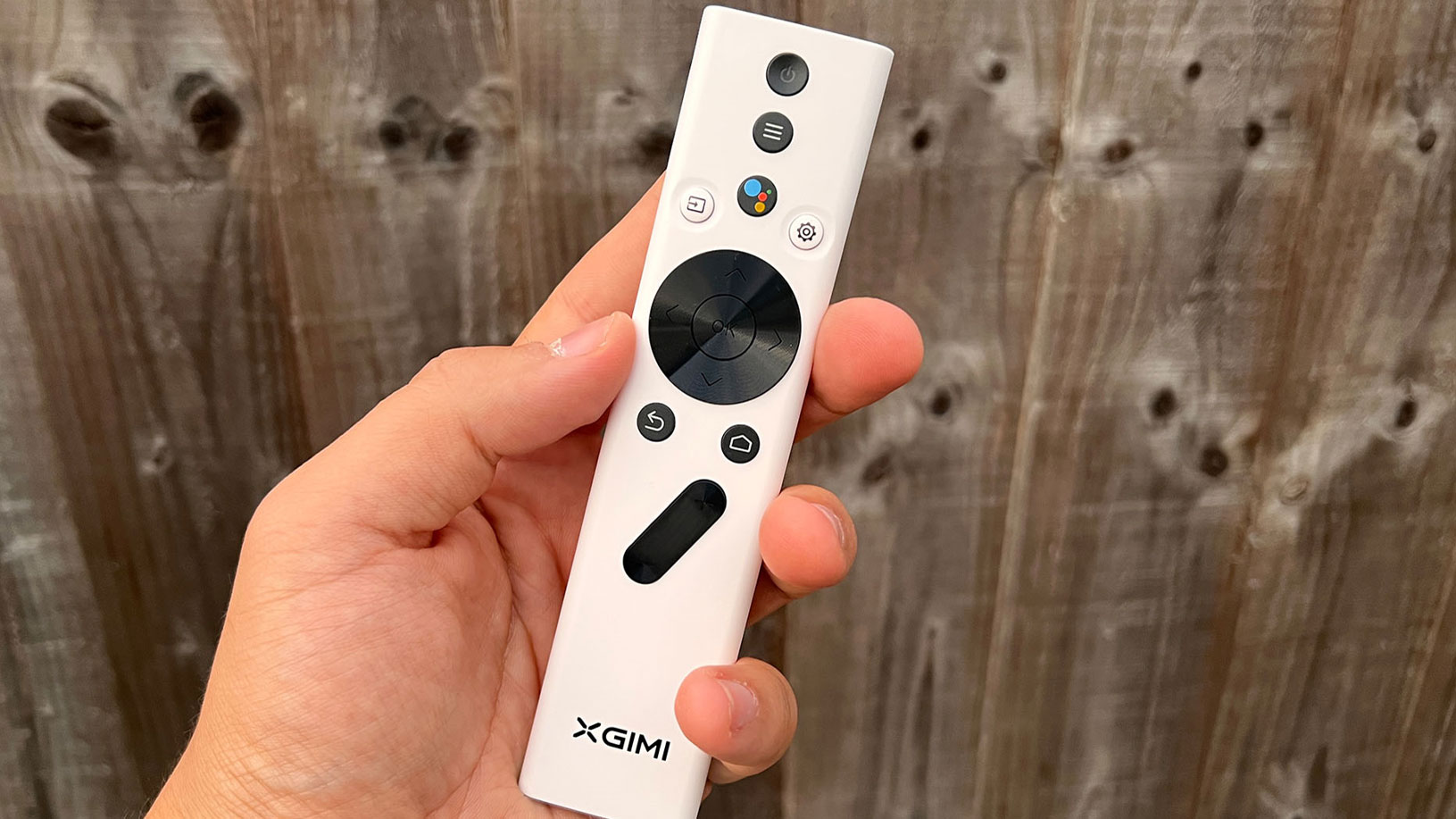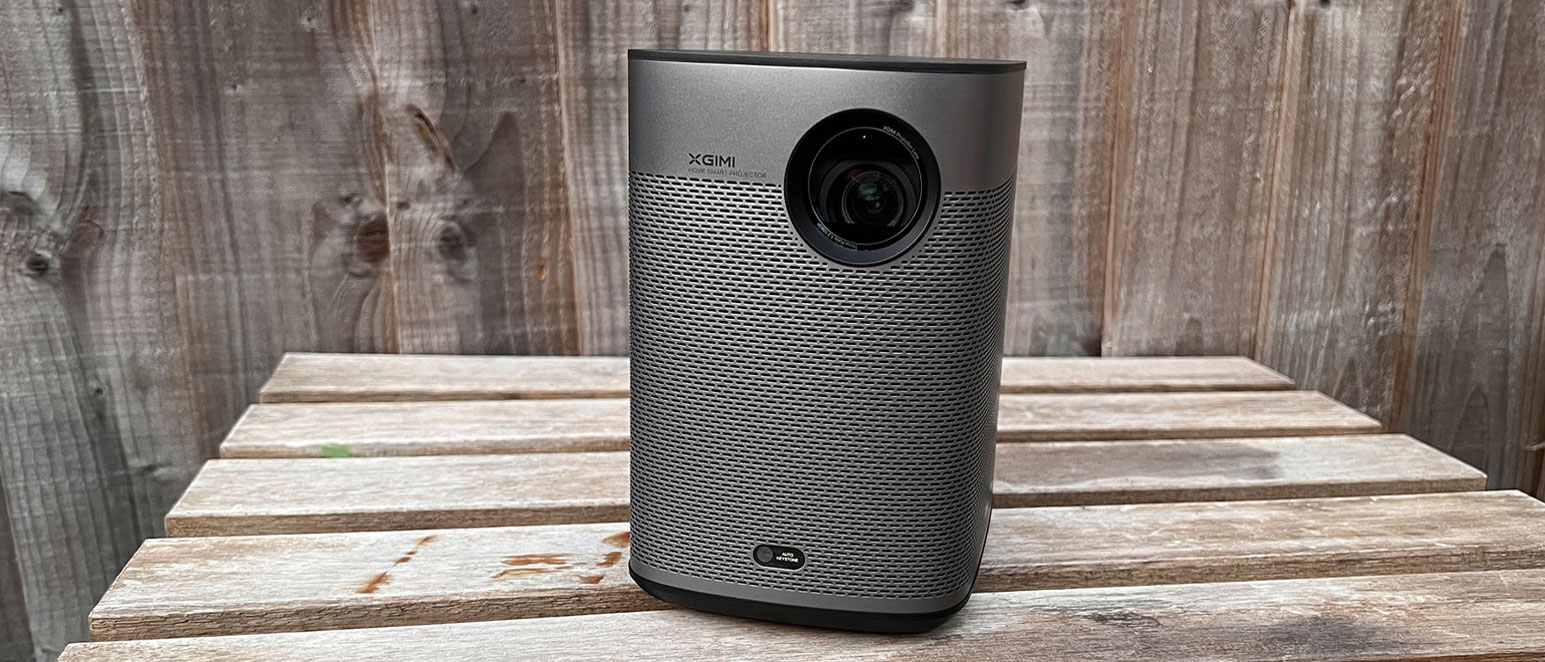Top Ten Reviews Verdict
The Halo+ portable projector is an ideal purchase for home theater newcomers and enthusiasts alike, and it is surprisingly portable too.
Pros
- +
Great picture quality at 1080p
- +
Compatible with Android TV and Google Assistant
- +
Great design
Cons
- -
Netflix not supported
- -
Can struggle with dark scenes
Why you can trust Top Ten Reviews
Portable projectors may not be the most commonplace choice for a home cinema setup, but XGIMI is working off a solid template. Its last effort, the Halo, was bright and crisp in equal measure.
Screen size: 200 in
Contrast: 1000:1
Lamp life: 25,000 hours
Max brightness: 900 lumens
Ports: HDMI, USB 2.0, headphones, power
Dimensions: 4.58 x 5.7 x 6.77 in
Weight: 3.5 lbs
The Halo+, then, is more of an iterative product – but that’s not a bad thing, and we think this is one of the best mini projectors around. It takes many of the same design cues from its similarly-titled predecessor, but ups the brightness while still offering Android TV natively. The big boon here, though, is ‘auto keystone’, which ensures that as soon as the Halo+ projector is set up, it skips the initial meddling with settings; pictures are square and clear, adding to the excellent portability.
The Halo+ also adds HDR10+ support for additional colors and a more vivid image than its slightly cheaper predecessor, although the recommended maximum image size does drop to 200 inches (but that’s hardly likely to be a dealbreaker).
On the sound front, it’s still far beyond what’s offered by many comparative projectors. The Harman/Kardon speakers are back, and they’re still powerful enough to accompany a blockbuster or two, although if you’ve got a setup with a dedicated subwoofer that’ll undoubtedly outperform them.
All of this is packed into an impressively slim, unassuming but premium package that looks great and wouldn’t look out of shape in the latest tech giant’s keynote.
Halo+: Design and build
The key thing about a portable projector is the ease with which it can be lugged from place to place, and in this regard, the Halo+ follows on from the excellent work of the original Halo. In fact, it’s the same design as its predecessor aside from a subtle pill-shaped cut out at the front of the newer model which is used as a sensor for auto keystone adjustments.
That means you get a compact but dense (3.5 lbs) box that feels like it could double as a small desktop PC. That’s backed up by a brushed aluminum look and ‘cheese-grater’ perforations. All in all, it’s a sturdy feeling package, although if you’re travelling we’d always advise padding whichever case you use just to be safe.
Sign up to receive the latest news, reviews, buying guides and deals direct to your inbox
On the back, you’ll find ports for power (more on that shortly), HDMI 2.0 input, USB, and a headphone jack, while on the base you’ll find an option to raise the projector up through a small folding stand, and a mounting point for a tripod you may have laying around. The top is uncomplicated, too, with a simple play/pause button and volume buttons.
The simple design means much of the heavy lifting is done with the slim remote, which comes in white. We’d maybe have preferred a darker color to match the rest of the unit, but it’s small enough to be thrown in a bag and offers more control options and direct access to Google Assistant.

Halo+: Features and specs
The Halo+ runs Android TV, meaning plenty of your favorite streaming apps can be found right out of the box. So whether you’re streaming Prime Video or Disney Plus content, you’re ready to go as soon as you’ve logged in, while Google Assistant being built-in means less time deciphering the fairly minimalist remote and more time queuing up your content. It also supports Chromecast, meaning you can instantly share treasured memories on the biggest screen imaginable.
Interestingly, Netflix doesn’t seem to be supported at the time of writing. You can install the app, but it simply won’t run, suggesting it could be a case of updating the Halo+ in the future. You can, however, plug in your own streaming stick/games console of choice and enjoy it that way, but it’s a sizeable omission for anyone looking to watch Stranger Things and the like.

We’ll touch on the auto keystone in a moment, but there’s also a low latency mode that XGIMI says will offer a latency of just 26.5 milliseconds. That’s not going to offer much in the way of competitiveness in twitchy shooters, but for playing a game of FIFA on a huge wall, it’ll feel like you’re in the stadium.
The battery runs for around two hours, but if you’re staying indoors, there’s an included power cable – ideal for movie marathons, or a three-hour fantasy epic.
It’s also worth pointing out that XGIMI says the Halo+ supports 3D content, but we were unable to test this.

Halo+: Setup and assembly
The Halo+’s auto keystone tech, facilitated by the aforementioned sensor at the base of the front grille, is the kind of thing we want to see more projector manufacturers implement.
Gone are the days of fumbling with focus (although manual tweaking is possible) as auto keystone, working in conjunction with autofocusing and obstacle avoidance, sets up your Halo+ with minimum fuss.
That means it really is as easy as opening the box, plugging it in, and pressing the power button (once you’ve logged into the relevant apps, naturally).
It’s worth noting, too, that the Halo+ is packaged with plenty of space between the device itself and the outer box. It’s a small touch but prevents scratching of the lens in transit. In fact, in lieu of a case, you could do a lot worse than popping it back in the box if you have space for it in your house or vehicle.
Halo+: Picture
Let’s get down to brass tacks – the Halo+ offers a great picture in most scenarios. Watch the latest bright movie, and you’ll find it’s vivid and enjoyable right up to the maximum image size (although 100 inches feels like the sweet spot).
The HDR10 is a nice addition, but it’s still far behind what you’d get on a monitor (that’s to be expected, though). There are adjustable settings, however, so you can adjust the color tone with a series of presets.
Sadly, darker scenes (or, in The Batman’s case, darker movies) do tend to be a struggle for the projector. That’s perhaps also a bit of a no-brainer, but even with the impressive 900 lumens of brightness here, it’s perhaps a bridge too far for the Halo+. Switching to more colorful Marvel-level fare was a much better experience, though.

Halo+: Sound
The Harman/Kardon speakers on offer here sound impressively bassy, and support DTS and Dolby Audio. You’ll no doubt want to connect a soundbar with a dedicated subwoofer for a true home cinema experience, but if this is all you have and your neighbours don’t mind, you’ll have plenty of power for those big action scenes or sweeping soundtracks.
The headphone jack is also a nice touch, and there’s Bluetooth connectivity to connect to a set of dedicated headphones if you’d prefer, or to an external speaker.
Halo+: Price and availability
- $849 / £749
You can find the Halo+ on Amazon and XGIMI's website for $849 / £749, making it a premium option in the portable speaker space.
For the price, though, you get a very capable device with a great picture and speakers. The prior Halo retails for $50 / £30 less, meaning if you’re not interested in HDR10, you can save yourself some money – ideal if you intend to keep the projector stationary and therefore won’t need the auto keystone adjustment.
Halo+: Care and maintenance
The Halo+’s portable nature suggests that it’s probably rugged enough to withstand a little bit of a battering in your bag, and it certainly feels tough enough. With that said, all being well you can expect 25,000 hours of usage out of the lamp inside, which is about level with similar devices. Due to its fragile nature, we'd suggest storing it in a case or in the box it came it to prevent damage to the lens.
XGIMI also offers a sizeable support document, as well as a two-year warranty period from the date of purchase.
Halo+: User reviews
The Halo+ currently has an average rating of 4.5 stars out of 5 on Amazon, with many users noting that it’s ideal for indoor viewing in bedrooms or lounges.
A few note the reliability of the unit, too, saying that it feels more capable than cheaper units.
As we’ve mentioned, though, some customers have noted that darker movies suffer outdoors, while others have had to speak to XGIMI customer support and have been impressed with the response there.
Should you buy the Halo+ portable projector?
If your budget can stretch that far, it’s hard to find anything that offers an analogous experience to what XGIMI does with the Halo+. If you’re looking for an excellent projector, it’s the best you’ll find without offering 4K playback, and that’ll cost you an awful lot more and will be a lot less portable.
The original Halo is still available for a little less money, but in our opinion, the auto keystone and HDR10 futureproofing are worth the additional cost if you’re going to invest in the first place.
How does the Halo+ compare to competitors?
We’d argue that the Halo+ is the new gold standard for portable projectors, particularly for movie nights and TV binges. While there are some odd foibles (lack of Netflix, for one), it’s a great all-encompassing unit that offers better speakers, a better picture, and a more eye-catching design than any of its contemporaries.
The main drawback is the high price point. For $400 less, you can bag a very decent projector with the Epson EX3260, but you'll have to downgrade on the specs mentioned above.
The Kodak Luma 150 pocket projector is another great portable option if you're looking for a projector you can take on the road. It features a 2.5-hour battery life, which is enough to watch most movies or several episodes of a show without having to recharge it.

Lloyd Coombes is Top Ten Reviews' Computing Customer Advisor, and a freelance writer with a specialism in tech, gaming, and fitness. Since starting out as a blogger, he’s written for sites like IGN, TechRadar, and more.
An expert on all things Apple ever since he got a second-hand iMac, Lloyd can regularly be found testing software on iPhone, iPad, Apple Watch and Mac — when he’s not testing the platforms themselves, that is. He’s also Dexerto.com’s Games Editor, and a podcaster.
When he’s not writing, you can probably find him running after his son, playing Destiny 2, or at the gym.

